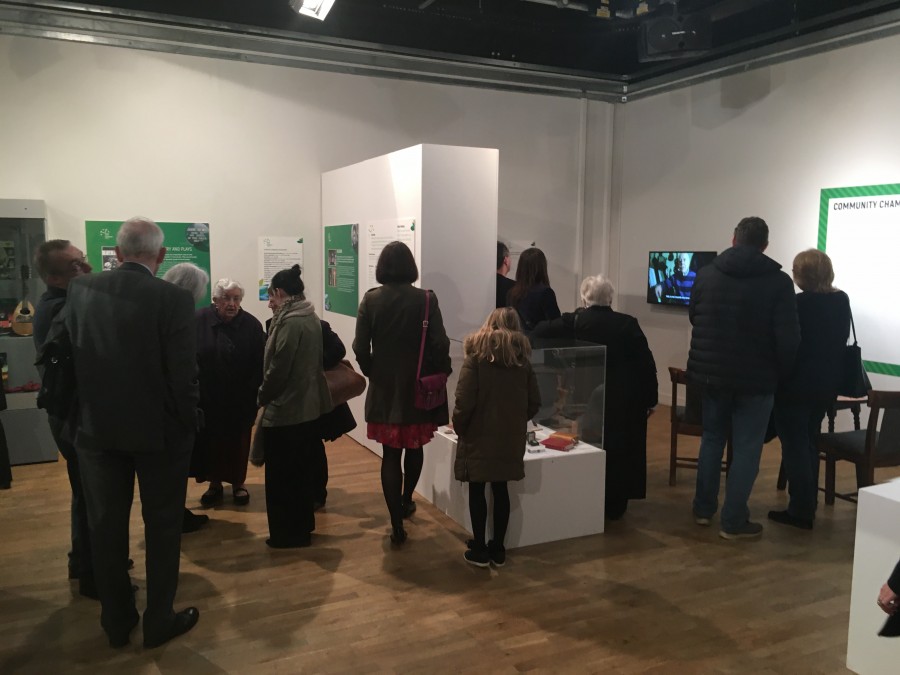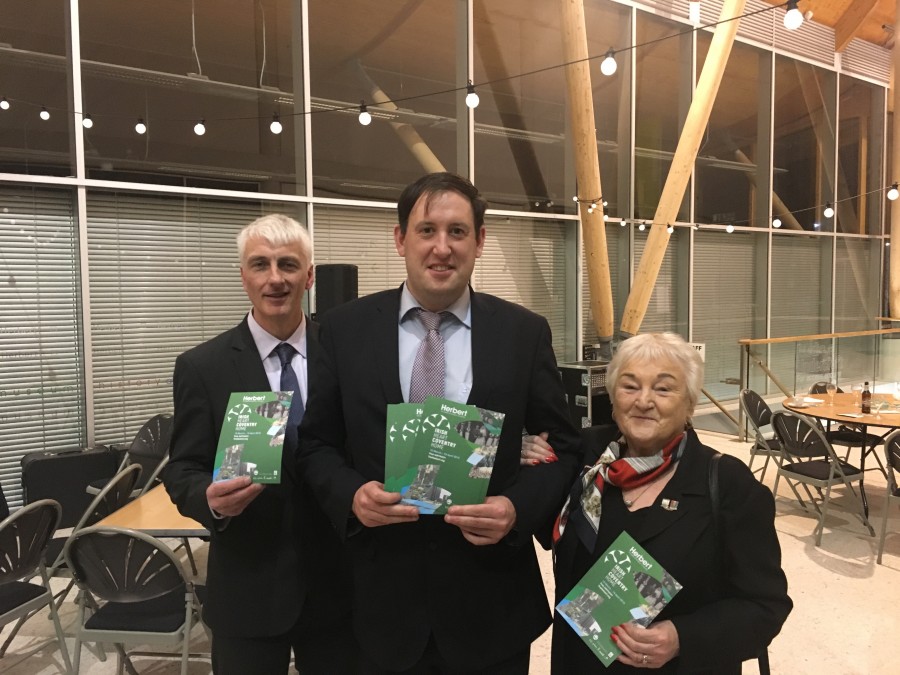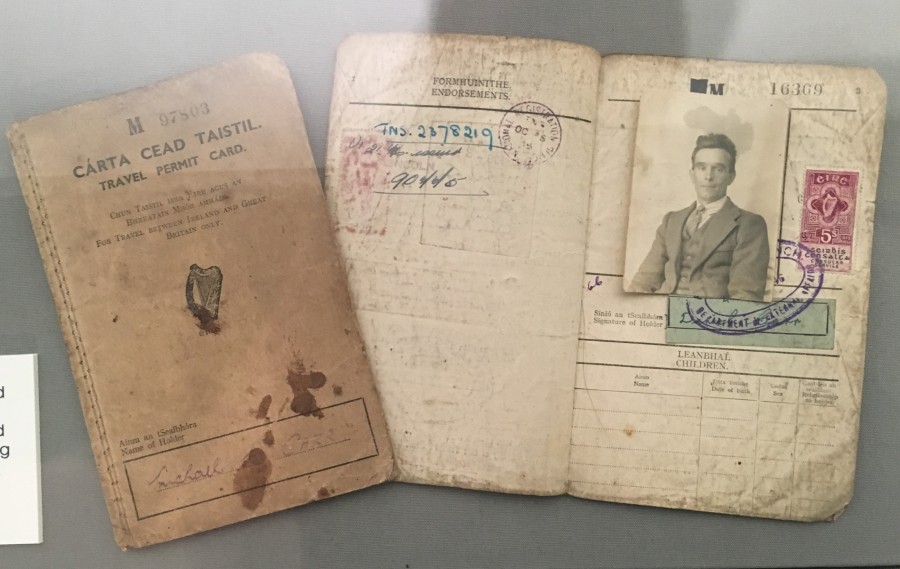Kieran’s Our City, Our Town Article,
Cork Independent, 20 September 2018
Irish Heart, Coventry Home
Irish Heart, Coventry Home is an exhibition, which is currently being exhibited in the new building foyer of Cork City Hall for the next three weeks. It is a project I have been involved with the last year in a small way offering heritage management support and advice on behalf of Cork City Council. The exhibition is curated by Ciaran Davis at the Coventry Irish Society. It is about Irish people who made Coventry their home between 1940 and 1970. It is based on the experiences of Irish people who have lived and worked in the city.
Many Irish people emigrated to Coventry from Cork and they have contributed richly to the culture, economy and character of the city. These links were celebrated in 1958, when Cork and Coventry were twinned with each other. The exhibition has travelled to Cork to celebrate the enduring relationship that exists between the two cities. During the Second World War, many Irish men and women came to work in Coventry’s factories and hospitals. After the war, Irish migrants were among those who came to help with the city’s reconstruction following the devastation caused by air raids. Their labour was vital, not just in construction and industry but in education, civic life and the newly established National Health Service. By 1961 there were 19,416 Irish-born people in Coventry and they formed 6% of the city’s population, which made them the largest ethnic minority in the city.
The majority of Irish people who migrated to Coventry after the Second World War were usually young people who came from Roman Catholic, working class, rural backgrounds and the majority were women. They often stayed with family members already in Coventry who paid for their ticket and helped them find employment. Men usually arrived alone and found work by applying to adverts in newspapers or through speaking to fellow Irish people. Irish people were employed in a variety of jobs, working on the buses and in hospitals, factories and schools. They were involved in the building of the ring road, housing estates and the new cathedral, supporting the city’s post-war recovery and contributing to its economy. The money that Irish migrants sent home was relied on by families who remained in Ireland. Between 1939 and 1969 the Irish economy received almost £3 billion in remittances from Irish workers.
As people settled in the city, they opened social clubs and pubs, which became vital community spaces. Irish people arriving in Coventry often headed straight to the clubs where they learnt where to find work or accommodation. A few venues even had their own lodgings. Some landlords promoted Irish welfare and held charity nights or lent money to people who were struggling. Many of the clubs were established in the 1950s, which coincided with the rise of the Irish showbands, who were renowned for their high-energy performances. In the 1960s, singers such as Joe Dolan and Brendan Bowyer toured Coventry and were popular with the Coventry-Irish community. By 1967, the Banba Club had a membership of over 1000 and on a Saturday night, an average of 650 people would come through the club’s doors. There were also people in the community who vowed never to drink alcohol. In 1964 some of them set up the Coventry branch of the Pioneer Association, an organisation originally set up in Ireland. They held dances, sporting events and dinners at the Pioneer Hall in Coventry. Few of the Irish clubs remain in the city, but their legacy endures because many Irish people met their future spouses at the dances
A number of Irish sports clubs were established in Coventry, offering sports such as hurling, Gaelic football and camogie – a sport similar to hurling played by women. Priests and other members of the community helped to set up these teams because they were concerned that young people were forgetting their Irish roots. There was sometimes competition between the clubs to recruit the best Irish sportspeople in Coventry. Gradually, the teams expanded and some purchased clubhouses where they could socialise after matches. Players often brought their families to watch the games and their children sometimes went on to represent the same team. The clubs held exhibition games featuring Irish teams. In 1966 St Finbarr’s Sports and Social Club held a hurling match between Galway and Meath, which was watched by around 10,000 spectators. The clubs initially ran male-only teams, but in 1971 a group of women established their own camogie team in Coventry.
Most Irish people who came to Coventry belonged to the Roman Catholic faith. A smaller number of Protestants also migrated, and for both groups religion played an integral role in their lives. Irish Protestants often joined pre-existing parishes, but the higher number of Irish Catholics meant that new churches needed to be built. In 1913 there were two Catholic churches in Coventry. By 1983 this had grown to 17, many supported by donations from the community. In the 1950s and 1960s a number of Catholic schools were also built to accommodate the expanding Irish Catholic population. For many Irish migrants it was important that church attendance was continued by the next generation. Couples got married in local churches and their children received their first sacraments in the same parishes.
To learn more (and to contribute to the project) Irish Heart, Coventry Home is currently on display in the foyer of the new building in Cork City Hall. The curator Ciaran Davis from Coventry Irish Society will be present at the space for Cork Culture Night, Friday 21 September.
Captions:
964a. Irish Heart, Coventry Home exhibition at Herbert Gallery, Coventry in March 2018 (picture: Kieran McCarthy)
964b. Coventry Irish Society stalwarts Simon McCarthy and Kay Forrest with Cllr Kieran McCarthy at the launch of Irish Heart, Coventry Home last March 2018 (source: Coventry Irish Society)
964c. Irish Emigrant Travel Permit Card between Britain and Ireland, 1946 (source: Coventry Irish Society)


